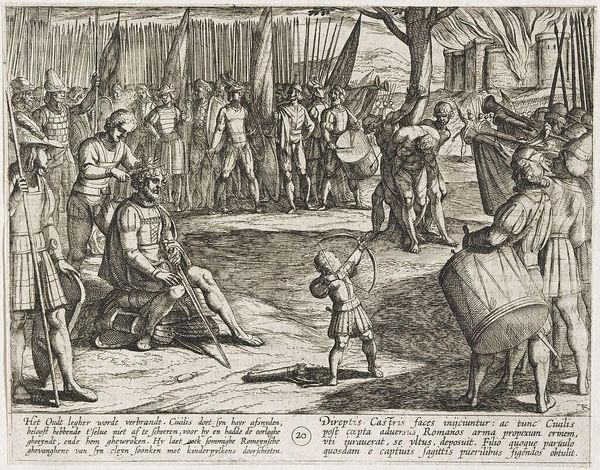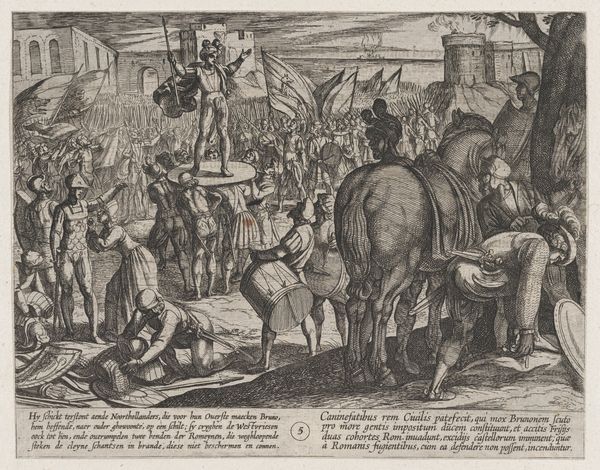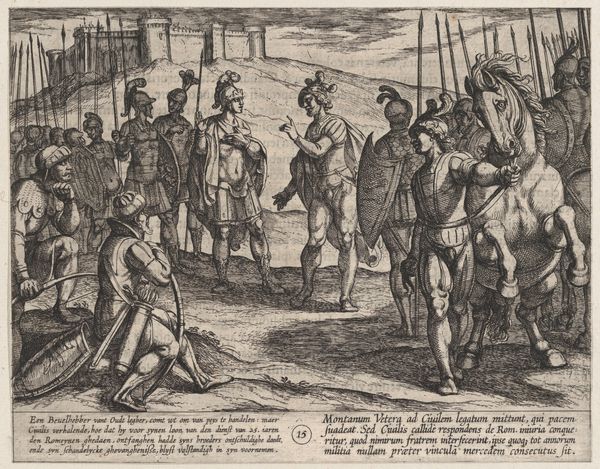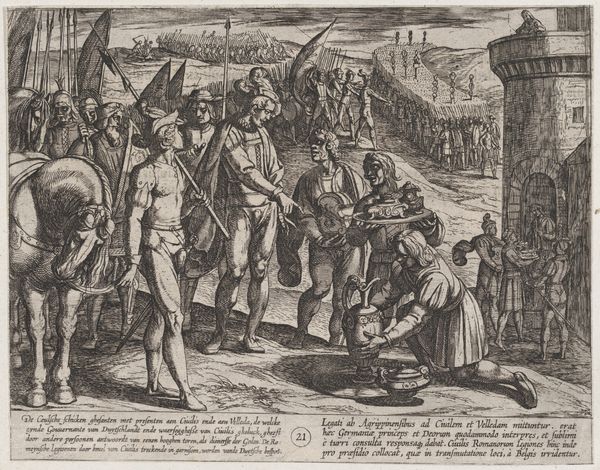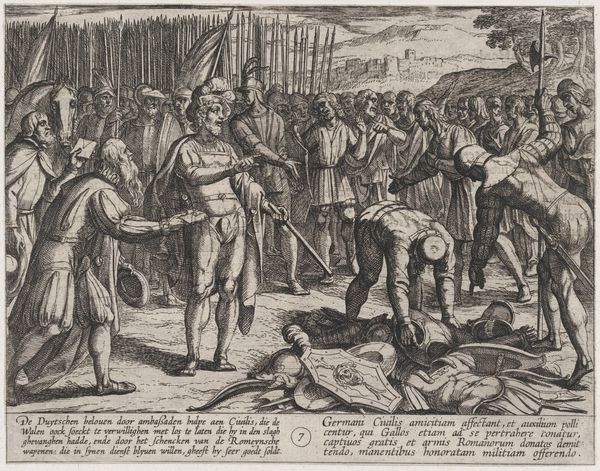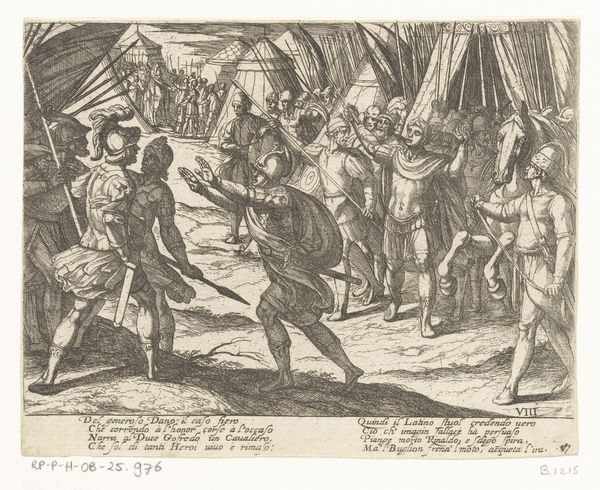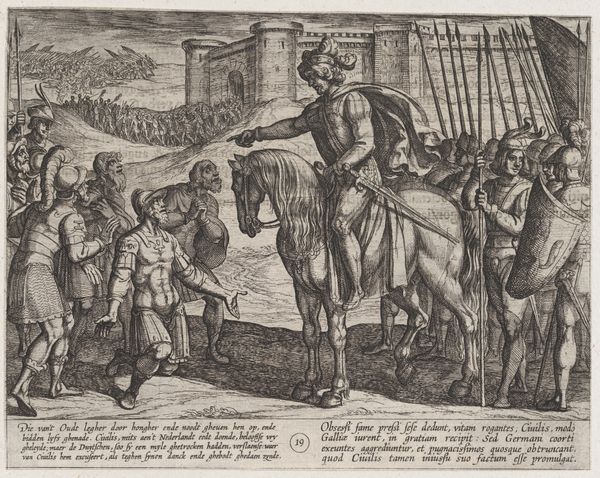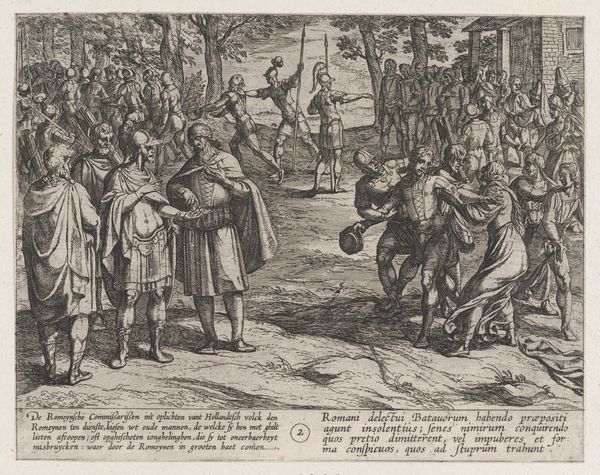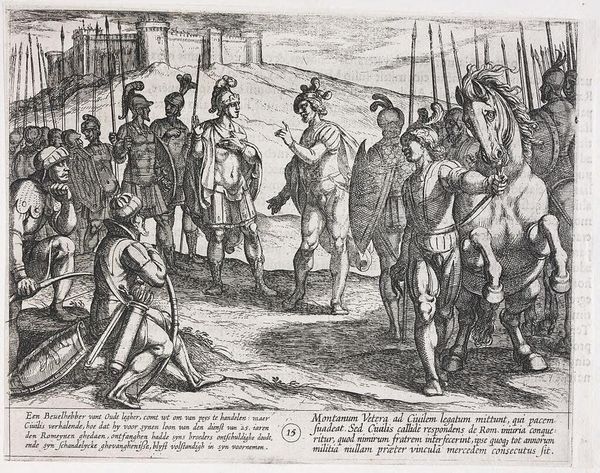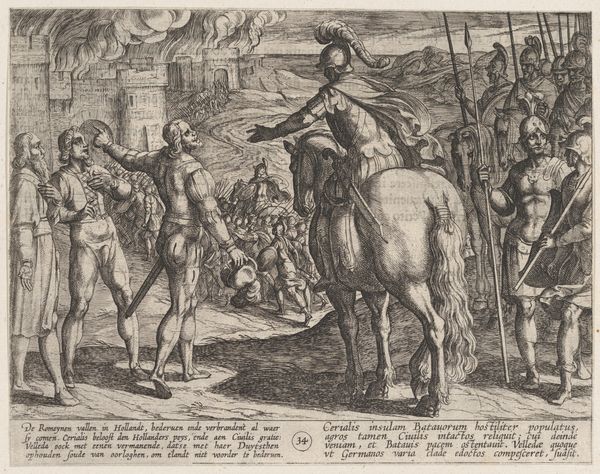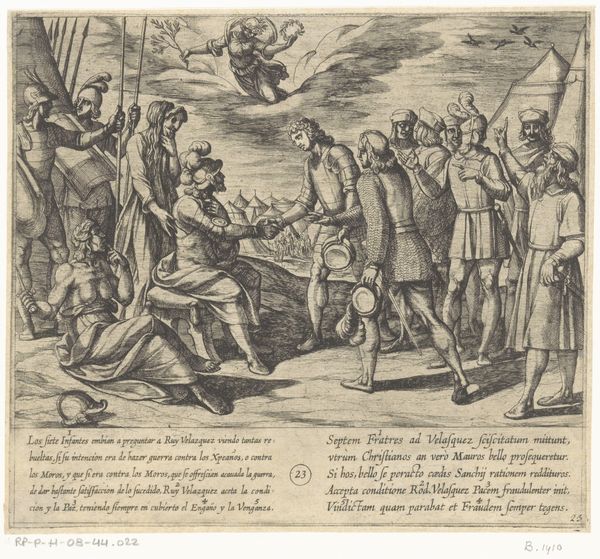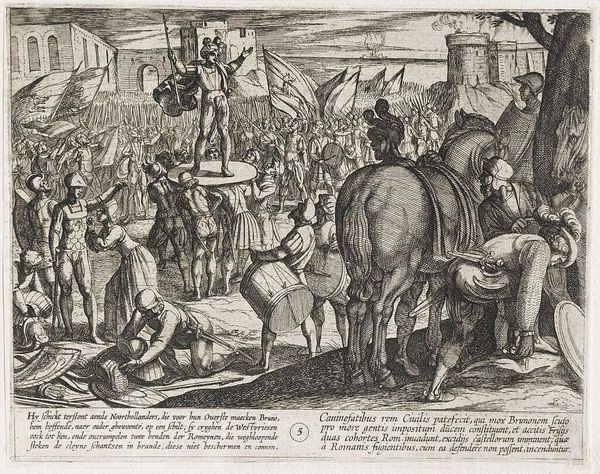
Plate 20: Civilis Having his Hair Cut, from The War of the Romans Against the Batavians (Romanorvm et Batavorvm societas) 1611 - 1612
0:00
0:00
drawing, print, engraving
#
drawing
# print
#
figuration
#
soldier
#
men
#
genre-painting
#
history-painting
#
engraving
Dimensions: Sheet: 6 5/16 × 8 1/8 in. (16 × 20.6 cm)
Copyright: Public Domain
Curator: This engraving by Antonio Tempesta, created around 1611-1612, is titled "Plate 20: Civilis Having his Hair Cut, from The War of the Romans Against the Batavians." It’s currently held at the Metropolitan Museum of Art. Editor: Immediately, it feels crowded, energetic... chaotic, almost. Like a buzzing beehive of activity centered around this figure getting his hair cut. Is that really the main event here? It seems oddly… domestic for such a charged scene. Curator: The "haircut" is symbolic. Civilis, the Batavian leader, vowed not to cut his hair until he'd avenged his people against the Romans. This print depicts that moment of liberation, of fulfilling his oath after a victory. Editor: Ah, that explains the buzz! There’s a triumphant feeling underlying it. You can see the bonfires, the soldiers brandishing their weapons in the background. The boy with the bow and arrow adds a strange, unsettling note. What’s with him? Curator: He is being offered Roman prisoners as targets for his arrows, thus being incited to swear revenge too, a practice by Civilis reported by the roman historian Tacitus.. Consider how Tempesta, during the Counter-Reformation, might be portraying "barbarian" justice, or questioning imperial dominance. Editor: So it’s both a moment of celebration and a slightly disturbing ritual. There's this tension between victory and brutality, civilization and... well, not. And how Tempesta depicts the details is intriguing—the textures of the armor, the flames in the distance, and the almost nonchalant way Civilis sits there… very theatrical, somehow! Curator: The theatricality might stem from the broader context of history painting at the time, focusing on dramatic narratives and moral messages. What do you think that message could have been, here? Editor: Hmm. Maybe that liberation always comes at a cost? This image resonates precisely because of those layered complexities—violence, release, and uncertain futures bound into one captured moment. It’s a stark look into the consequences of rebellion and a time when empires clashed. Curator: I completely agree. It prompts reflections on what it means to resist, what price one is willing to pay for that, and what sacrifices are justifiable to fuel hatred from one generation to the next. Powerful indeed!
Comments
No comments
Be the first to comment and join the conversation on the ultimate creative platform.
